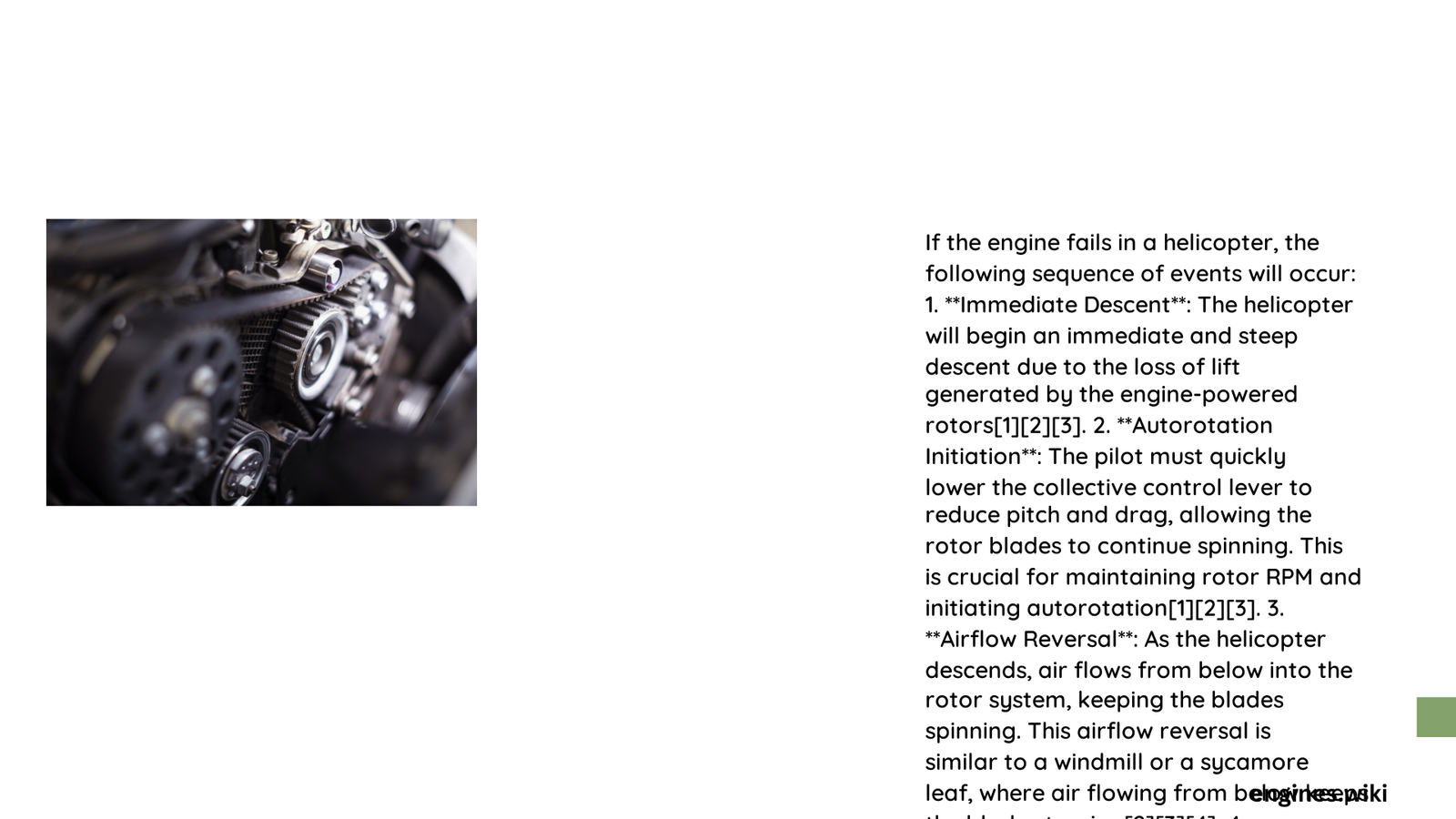When a helicopter experiences an unexpected engine failure, the situation transforms into a high-stakes aerial emergency where pilot skill, aircraft design, and split-second decision-making determine survival. The helicopter’s complex mechanical systems immediately engage specialized safety mechanisms like the freewheeling unit, enabling the pilot to execute a controlled descent known as autorotation, which allows the main rotor to continue spinning and provide critical lift without engine power.
What Occurs Immediately During Helicopter Engine Failure?
Helicopter engine failure triggers a rapid sequence of physical and mechanical responses:
How Does the Helicopter Transition into Autorotation?
- Freewheeling Unit Activation: Automatically disconnects engine from rotor system
- Rotor System Redirection: Shifts airflow from downward to upward movement
- Descent Initiation: Pilot lowers collective pitch to reduce mechanical drag
- Rotor RPM Maintenance: Upward air movement through rotor maintains rotational speed
What Physical Forces Impact Helicopter During Engine Failure?
| Force Type | Impact | Mitigation Strategy |
|---|---|---|
| Gravitational | Immediate downward acceleration | Controlled descent through autorotation |
| Aerodynamic | Potential loss of directional stability | Precise cyclic and collective pitch management |
| Mechanical | Potential transmission stress | Careful rotor speed maintenance |
What Critical Actions Must Pilots Take?
Pilots must execute a precise sequence of emergency procedures:
- Immediate Collective Pitch Reduction
- Lower collective within seconds
- Minimize mechanical rotor drag
-
Prepare for controlled descent
-
Airspeed and Heading Control
- Maintain optimal descent rate (50-60 knots)
- Use cyclic for directional stability
-
Keep tail rotor functional through transmission
-
Landing Preparation
- Identify suitable landing zone
- Execute precise flare maneuver
- Arrest forward and downward momentum
- Use stored rotor inertia for soft touchdown
What Determines Successful Autorotation?

Several critical factors influence successful engine failure recovery:
How Do Altitude and Airspeed Impact Survival?
- Height-Velocity Diagram Critical Zones
- Low airspeed/high hover altitude: High risk
- High airspeed/low altitude: Challenging recovery
- Optimal recovery window: Sufficient altitude and controlled airspeed
What Technical Factors Affect Autorotation Performance?
- Helicopter weight
- Rotor system inertia
- Density altitude
- Terrain characteristics
- Pilot training and experience
What Are Survival Probabilities?
Proper training and quick response significantly increase survival rates:
- Professional helicopter pilots undergo extensive autorotation training
- Modern helicopters designed with multiple safety mechanisms
- Estimated survival rate with proper technique: 80-90%
Technical Survival Metrics
- Average descent rate: 1,500-2,000 feet per minute
- Typical autorotation airspeed: 50-90 knots
- Recommended practice: Regular emergency procedure simulations
Conclusion
Helicopter engine failure represents a complex, high-stakes scenario where mechanical design, pilot skill, and instantaneous decision-making converge to determine survival.
